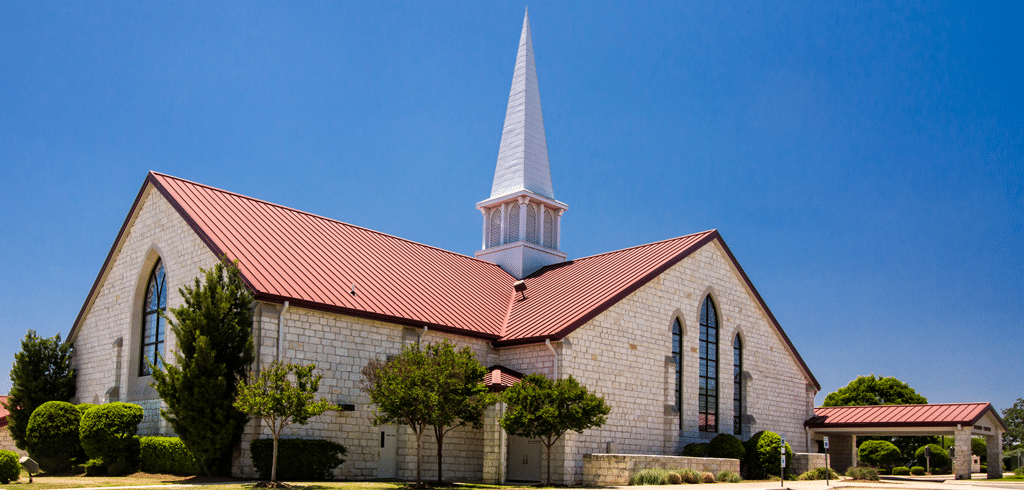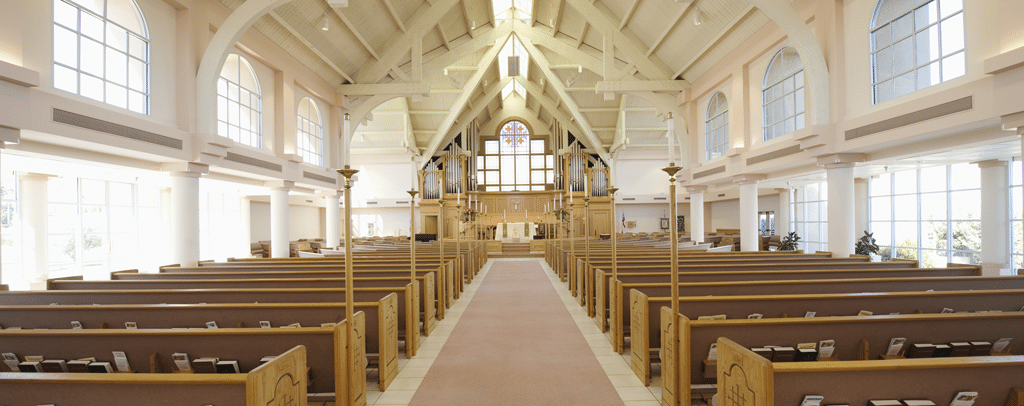
Revitalize Your Sanctuary: Mastering Church HVAC Solutions
Revitalize Your Sanctuary: Mastering Church HVAC Solutions
Have you ever wondered how the heating, ventilation, and air conditioning (HVAC) system in your church impacts the comfort and well-being of your congregation?
As a homeowner or church administrator, understanding the nuances of church HVAC systems is crucial. It’s not just about maintaining a pleasant temperature; it’s about creating an environment where your community can thrive.
In this article, we delve deep into the world of church HVAC systems.
From understanding the basics to exploring advanced maintenance tips, we cover everything you need to know. Whether you’re dealing with outdated equipment or looking for ways to improve efficiency, this guide is your go-to resource.
Get ready to transform your church into a haven of comfort and tranquility.
What is Church HVAC?
Church HVAC refers to the specialized heating, ventilation, and air conditioning systems used in church buildings. These systems are designed to provide comfortable temperatures and air quality for congregants, regardless of the season.
Unlike residential HVAC systems, church heating, ventilation, and air conditioning services must accommodate larger spaces, varying occupancy levels, and often, the unique architecture of religious buildings.
The complexity of church HVAC systems arises from the need to balance historical preservation with modern comfort.
Many churches are housed in older buildings with specific architectural features like stained glass windows, high ceilings, and intricate woodwork. These elements can pose challenges for efficient heating and cooling.
For instance, high ceilings may lead to heat rising and accumulating at the top, leaving the lower areas cooler. Similarly, older windows may not be as effective in insulating against external temperatures.
Moreover, the occupancy of churches can vary greatly. A church might be full to capacity during services and events but remain largely empty during the rest of the week. This fluctuation requires a flexible HVAC system that can efficiently adjust to changing needs.
Advanced systems with programmable thermostats or smart controls are becoming increasingly popular in churches for this reason.
They allow for temperature adjustments to be made remotely or scheduled in advance, ensuring the space is comfortable when needed while conserving energy when the building is unoccupied.
Another critical aspect of church heating, ventilation, and air conditioning service is air quality.
Large gatherings can lead to increased carbon dioxide levels and the spread of airborne contaminants. Modern HVAC systems in churches are therefore equipped with enhanced filtration and ventilation capabilities to ensure a healthy indoor environment.
This is particularly important in maintaining a safe and comfortable space for congregants, especially those with respiratory issues or allergies.
Church HVAC systems are a crucial component in maintaining the functionality and comfort of church buildings. They require careful consideration of the building’s architecture, occupancy patterns, and air quality needs to ensure they meet the specific requirements of a religious space.
Understanding the Basics of Church HVAC
Scale and Complexity
Church HVAC systems are distinct from their residential counterparts, primarily due to their scale and complexity.
These systems are engineered to manage the climate of much larger spaces, often with intricate architectural designs and fluctuating occupancy levels. Understanding the basic components of church HVAC and how they function together is crucial for efficient operation and maintenance.
Key Components of Church HVAC
Heating Systems: In a church setting, heating systems must be powerful enough to warm large, open spaces efficiently.
This often involves a combination of furnaces, boilers, or heat pumps. The choice of heating system depends on factors like the local climate, the size of the church, and energy efficiency considerations.
Air Conditioning Units: Air conditioning in churches is not just about cooling; it’s about controlling humidity and ensuring comfort for the congregation.
Large-scale air conditioning units, often with variable refrigerant flow (VRF) systems, are used to cool these expansive areas effectively.
Ventilation Systems: Proper ventilation is critical in a church environment to ensure a constant supply of fresh air and to control humidity levels.
This is particularly important in older buildings where air circulation can be a challenge.
Air Filtration and Purification: Given the communal nature of churches, air quality is a paramount concern.
Advanced filtration and purification systems are integral to church HVAC systems, helping to remove pollutants and allergens from the air.
Integration and Control Systems
Modern church HVAC systems are increasingly incorporating smart technology for better integration and control.
Programmable thermostats, automated climate control systems, and even remote monitoring options are becoming standard. These technologies allow for precise control over the indoor environment, adapting to different usage patterns and occupancy levels.
For example, the HVAC system can be programmed to activate before services or events, ensuring the space is comfortable when people arrive.
Energy Efficiency and Sustainability
Energy efficiency is another critical aspect of church heating, ventilation, and air conditioning service systems.
With the large spaces involved, running these systems can be costly.
Therefore, energy-efficient models, sustainable practices like zoning (heating or cooling only occupied areas), and regular maintenance are essential to keep operational costs down.
Additionally, some churches opt for renewable energy sources, such as solar panels, to power their HVAC systems, aligning with environmental stewardship values.
The basics of church HVAC involve a comprehensive understanding of its components, integration, and energy efficiency strategies. These systems are not just about heating or cooling; they are about creating a comfortable, healthy, and sustainable environment for worship and community gatherings.
Importance of Regular Maintenance for Church HVAC Systems
Regular maintenance is crucial for the longevity, efficiency, and reliability of your church HVAC system.
Proper upkeep not only ensures the comfort of your congregation but also helps in reducing operational costs and preventing unexpected breakdowns.
This section will explore the aspects of maintenance schedules, common issues, and DIY tips suitable for church administrators.
Maintenance Schedules: Staying on Track
Seasonal Check-ups: It’s advisable to schedule professional inspections of your church HVAC system at least twice a year.
These check-ups should ideally occur in the spring and fall to prepare the system for the extreme temperatures of summer and winter.
Filter Changes and Cleaning: Regularly changing air filters is a simple yet effective way to maintain your HVAC system. Filters should be checked monthly and replaced every three months, or more frequently if they become dirty.
Cleaning vents and ducts is also essential to ensure efficient airflow and prevent dust accumulation.
System Calibration: Annual calibration of your HVAC system ensures that all components are functioning correctly.
This includes checking thermostats, inspecting electrical connections, and ensuring that the heating and cooling systems are operating at optimal levels.
Identifying and Addressing Common Issues
Uneven Heating or Cooling: If certain areas of the church are not reaching the desired temperature, it could indicate issues with ductwork, insulation, or the HVAC unit itself.
Regular inspections can help identify and rectify these problems.
Strange Noises or Odors: Unusual sounds or smells coming from the HVAC system can be a sign of mechanical issues or blockages. Prompt attention to these signs can prevent more significant problems down the line.
Increased Energy Bills: A sudden spike in energy costs can indicate inefficiencies in the HVAC system. Regular maintenance helps in keeping the system running smoothly and cost-effectively.
DIY Tips for Church Administrators
While professional maintenance is essential, there are several things that church administrators can do to keep their church heating, ventilation, and air conditioning service systems in good shape:
Regular Inspections
Conduct visual inspections of the HVAC units, checking for any signs of wear and tear or damage.
Clean Surrounding Areas
Keep the area around outdoor units clear of debris, leaves, and dirt to ensure unobstructed airflow.
Educate Staff and Volunteers
Educate your staff and volunteers about the basics of the HVAC system. This includes understanding the ideal temperature settings and recognizing signs that indicate a need for professional maintenance.
Regular maintenance of your church HVAC system is not just a technical necessity; it’s a stewardship practice that ensures the comfort and safety of your congregation.
By adhering to a consistent maintenance schedule, addressing common issues promptly, and employing simple DIY tips, church administrators can significantly extend the life and efficiency of their HVAC systems.
Energy Efficiency and Cost Savings in Church HVAC Systems
Energy efficiency in church HVAC systems is not just an environmental concern; it’s a financial strategy that can lead to significant cost savings in the long run.
This segment delves into methods to enhance the efficiency of your HVAC system and the potential savings that can be realized.
Upgrading to Energy-Efficient Models
High-Efficiency HVAC Units: Replacing old, inefficient HVAC units with high-efficiency models can drastically reduce energy consumption.
Look for systems with a high Seasonal Energy Efficiency Ratio (SEER) rating for cooling and a high Annual Fuel Utilization Efficiency (AFUE) rating for heating.
Programmable Thermostats: Installing programmable thermostats allows for better control over heating and cooling, reducing energy usage when the church is unoccupied. Smart thermostats can even learn your schedule and adjust temperatures accordingly.
Variable Speed Motors: HVAC systems with variable speed motors adjust their output based on the current need, which is more energy-efficient than running at full capacity all the time.
Improving System Efficiency
Regular Maintenance: As mentioned earlier, regular maintenance is key to keeping your church HVAC system running efficiently. This includes cleaning and replacing filters, inspecting ductwork, and ensuring all components are in good working order.
Ductwork Optimization: Leaky or poorly insulated ducts can significantly reduce the efficiency of your HVAC system. Sealing and insulating ducts can improve efficiency and lead to cost savings.
Zoning Systems: Implementing zoning systems in your church can reduce energy consumption by allowing different areas to be heated or cooled based on their use and occupancy.
Potential Savings and ROI
Reduced Operational Costs: By investing in energy-efficient HVAC solutions, churches can see a substantial reduction in their energy bills. While the upfront cost may be higher, the long-term savings often justify the investment.
Rebates and Incentives: Many utility companies offer rebates and incentives for upgrading to energy-efficient HVAC systems. These programs can help offset the initial investment costs.
Return on Investment (ROI): The ROI of upgrading to an energy-efficient church HVAC system can be significant. Not only does it reduce monthly energy bills, but it also decreases the need for frequent repairs and extends the lifespan of the system.
Focusing on energy efficiency in your church HVAC system is a smart move both environmentally and financially.
By upgrading to energy-efficient models, optimizing system efficiency, and understanding the potential savings and ROI, churches can manage long-term costs effectively while contributing to a more sustainable future.
Navigating Common Challenges in Church HVAC Systems
Churches often encounter unique challenges with their church HVAC systems, stemming from factors like historical building constraints, uneven heating and cooling, and large, irregularly used spaces.
Addressing these issues effectively is crucial for maintaining a comfortable environment for congregants. This section outlines solutions to some of the most common HVAC challenges faced by churches.
Addressing Historical Building Constraints
Preserving Architectural Integrity: Many churches are housed in historical buildings where preserving the architectural integrity is crucial. In such cases, HVAC solutions need to be discreet and adaptable to the existing structure.
Ductless systems or mini-split units can be effective as they require minimal alteration to the building.
Custom HVAC Solutions: Sometimes, standard HVAC systems are not suitable for historical church buildings.
Custom solutions, such as tailored ductwork or specialized ventilation systems, may be necessary to meet both the preservation requirements and the heating and cooling needs.
Solving Uneven Heating and Cooling Issues
Zoning Systems: Implementing zoning systems can address uneven heating and cooling in large church spaces. These systems allow different areas of the church to be heated or cooled independently, based on their specific needs.
Improved Insulation: Enhancing insulation, particularly in older church buildings, can significantly improve temperature regulation.
This includes upgrading window insulation, sealing drafts, and adding insulation to walls and roofs.
Strategic Vent Placement: Optimizing the placement and size of vents can help in distributing air more evenly throughout the church, thereby addressing areas that are prone to being too hot or too cold.
Managing Large and Irregularly Used Spaces
Programmable Thermostats: For large spaces that are not in constant use, programmable thermostats can be highly effective. They allow for the HVAC system to be turned down or off when the space is unoccupied, saving energy and reducing costs.
Advanced Airflow Management: Advanced airflow management techniques, such as using ceiling fans or customized air distribution methods, can help in efficiently managing the climate in large, irregularly used spaces.
Regular System Assessments: Conducting regular assessments of the HVAC system can help in identifying areas where efficiency can be improved, especially in large spaces that have varying usage patterns.
Navigating the common challenges in church HVAC systems requires a combination of innovative solutions and regular maintenance.
By addressing historical building constraints, solving uneven heating and cooling issues, and managing large and irregularly used spaces effectively, churches can ensure a comfortable and welcoming environment for their congregations.
The Future of Church HVAC Technology
Advancements in technology are continuously reshaping the church HVAC industry, bringing new opportunities for efficiency, comfort, and sustainability.
This section explores upcoming trends in HVAC technology and how they can benefit churches.
Smart HVAC Systems
Integration with IoT: The integration of HVAC systems with the Internet of Things (IoT) is a significant trend.
Smart HVAC systems can be monitored and controlled remotely, offering unprecedented convenience and efficiency. For churches, this means being able to adjust settings for different events or times of day from a smartphone or computer.
Predictive Maintenance: Smart systems can predict when maintenance is needed, preventing breakdowns and prolonging the lifespan of the HVAC equipment. This predictive approach ensures that issues are addressed before they become major problems, saving time and money.
Energy-Efficient Innovations
Geothermal Heating and Cooling: Geothermal technology, which uses the earth’s stable underground temperature to heat and cool buildings, is becoming more popular. For churches, this can mean significant reductions in energy costs and a smaller carbon footprint.
Solar-Powered HVAC Systems: The use of solar energy in HVAC systems is a growing trend.
Churches can benefit from solar panels to power their HVAC systems, reducing reliance on traditional energy sources and promoting environmental stewardship.
Enhanced Air Quality Systems
Advanced Filtration and Purification: With a growing emphasis on health and indoor air quality, new HVAC systems are incorporating advanced filtration and purification technologies. These systems can significantly improve the air quality inside churches, which is especially important in a communal setting.
Humidity Control Technologies: Maintaining optimal humidity levels is crucial for comfort and health.
Modern HVAC systems are equipped with better humidity control, which is particularly beneficial for churches, where large gatherings can lead to increased humidity levels.
Customizable and Modular Solutions
Modular HVAC Systems: Modular systems offer flexibility and scalability, allowing churches to expand or modify their HVAC systems as their needs change. This adaptability is ideal for churches that may undergo renovations or extensions.
Tailored Solutions for Unique Spaces: As every church building is unique, the future of church HVAC lies in customized solutions. Advanced technology allows for systems to be tailored to the specific architectural and usage requirements of each church.
The future of church HVAC technology is marked by smart, energy-efficient, and customizable solutions. These advancements not only promise enhanced comfort and reduced operational costs but also align with the values of stewardship and sustainability that many churches hold dear.
By embracing these technologies, churches can ensure they are well-equipped to provide a comfortable and healthy environment for their congregations well into the future.
Here’s everything else you need to know about optimizing and maintaining these systems for the comfort of your congregation.
Advanced Considerations for Church HVAC Systems
Integrating Renewable Energy Sources with Church HVAC
In the quest for sustainability and cost-effectiveness, integrating renewable energy sources with church HVAC systems is becoming increasingly important.
This approach not only aligns with environmental stewardship values but also offers long-term financial benefits.
For instance, solar panels can be installed on church rooftops to harness solar energy, significantly reducing reliance on traditional power sources. This renewable integration can power the entire church HVAC system or supplement it, leading to reduced operational costs and a smaller carbon footprint.
Another renewable option is geothermal heating and cooling, which utilizes the earth’s stable underground temperature. This method is particularly effective for churches due to its efficiency in large spaces and minimal environmental impact.
By adopting these renewable energy sources, churches can demonstrate their commitment to caring for creation while ensuring their HVAC systems are economically and environmentally sustainable.
Adapting Church HVAC Systems for Extreme Weather Conditions
Churches located in areas with extreme weather conditions face unique challenges in maintaining comfortable indoor environments.
In such scenarios, the HVAC system must be robust enough to handle intense heat waves or freezing temperatures. This requires a strategic approach, such as installing HVAC units with higher capacity and durability.
Additionally, implementing advanced insulation techniques becomes crucial to prevent heat loss during cold spells or keep interiors cool during heat waves.
Moreover, churches should consider systems with rapid response features, allowing quick adjustments to sudden weather changes. This adaptability ensures that the church HVAC system can provide consistent comfort to congregants, regardless of external weather fluctuations.
Regular weather pattern analysis and system upgrades can also play a significant role in preparing the HVAC system for extreme conditions.
Leveraging HVAC Automation for Energy Management in Churches
The use of automation in church HVAC systems presents a significant opportunity for energy management and operational efficiency.
Automated systems can be programmed to adjust temperatures based on occupancy levels, time of day, and specific events. For example, the HVAC system can be set to operate at lower capacity on weekdays when the church is less occupied and ramp up for services or events.
Additionally, integrating HVAC automation with other building management systems can lead to further efficiencies.
For instance, linking the church HVAC system with lighting and security systems can create a cohesive, energy-efficient ecosystem within the church premises. This holistic approach not only reduces energy consumption but also simplifies the management of church facilities, allowing administrators to focus more on their core mission.
Optimizing Church HVAC for Enhanced Community Experience
Tailoring HVAC Solutions to Church Architecture
Churches often feature unique architectural designs that pose specific challenges for HVAC systems.
Tailoring HVAC solutions to accommodate these designs is essential for effective climate control. For instance, churches with high vaulted ceilings require systems that can circulate air efficiently in large, open spaces.
Solutions like strategic vent placement or the use of fans can help in distributing air evenly, preventing the common problem of heat accumulating at the top.
In addition, many churches have historical significance, necessitating HVAC solutions that preserve the integrity of the structure. This might involve using ductless systems or designing custom ductwork that blends seamlessly with the architecture.
The goal is to ensure that the church HVAC system enhances the architectural beauty of the church while providing optimal functionality.
Enhancing Air Quality in Church Environments
Maintaining high indoor air quality is crucial in church HVAC systems, especially considering the communal nature of church activities.
Advanced air filtration and purification systems can significantly improve the air quality, reducing the spread of airborne contaminants and allergens. This is particularly important in times of health concerns, such as during flu seasons or pandemics.
Moreover, proper ventilation is key to maintaining a healthy indoor environment. Church HVAC systems should be equipped with efficient ventilation mechanisms to ensure a constant supply of fresh air.
This not only contributes to the well-being of the congregation but also enhances the overall experience of churchgoers, making the church a more inviting space for community gatherings.
Implementing Sustainable Practices in Church HVAC Management
Sustainability in church HVAC management is not just about energy efficiency; it’s about adopting practices that reflect the values of the church community.
This includes using eco-friendly refrigerants, implementing recycling programs for old HVAC equipment, and considering the lifecycle impact of HVAC systems. Churches can set an example for the community by adopting green practices in their HVAC management.
Additionally, educating the church community about the importance of sustainability and how they can contribute can be a powerful tool.
This might involve workshops or informational sessions about energy conservation, the benefits of proper HVAC maintenance, and the role of individuals in reducing the carbon footprint.
By involving the congregation in these efforts, churches can foster a sense of collective responsibility towards the environment, further enhancing the role of the church HVAC system in creating a sustainable community space.
Advanced Strategies for Church HVAC Efficiency and Comfort
Implementing Cutting-Edge Technologies in Church HVAC Systems
In the realm of HVAC systems, the adoption of cutting-edge technologies is a game-changer for enhancing efficiency and comfort.
One such technology is the use of Variable Refrigerant Flow (VRF) systems. VRF technology offers precise temperature control, adapts to varying occupancy levels, and is highly energy-efficient, making it ideal for the diverse needs of church environments.
This system allows different areas of the church to have individualized climate control, ensuring comfort for all congregants, regardless of where they are seated.
Another innovative technology is the integration of HVAC systems with Building Management Systems (BMS). This integration allows for centralized control and monitoring of the church HVAC system, leading to more efficient operation and easier maintenance.
With BMS, church administrators can quickly identify and address any HVAC-related issues, often before they escalate into bigger problems.
Embracing Eco-Friendly and Sustainable HVAC Solutions
Sustainability is becoming increasingly important in the management of church HVAC systems. One approach to this is the adoption of eco-friendly HVAC solutions, such as systems that utilize renewable energy sources like solar power.
Solar HVAC systems can significantly reduce a church’s reliance on traditional energy sources, cutting down on utility costs and contributing to environmental conservation.
Additionally, the use of green building materials and practices in HVAC installation and maintenance can further enhance the sustainability of HVAC systems.
This includes the use of non-toxic, recyclable, and sustainably sourced materials for HVAC components and insulation.
By embracing these eco-friendly solutions, churches not only improve their HVAC efficiency but also align their operations with broader environmental stewardship principles.
Customizing HVAC Solutions for Seasonal and Event-Based Needs
Churches often experience fluctuating HVAC needs based on seasonal changes and special events.
Customizing HVAC systems to adapt to these varying requirements is essential for maintaining optimal comfort levels. During winter, churches require efficient heating systems that can handle the increased demand, while in summer, effective cooling and dehumidification become priorities.
For special events like weddings, funerals, or large congregational gatherings, the church HVAC system should be able to quickly adjust to the increased occupancy.
This might involve pre-programming the HVAC system to start operating at a higher capacity before the event begins, ensuring the space is comfortable when attendees arrive.
Advancing the efficiency and comfort of church HVAC systems involves embracing new technologies, adopting sustainable practices, and customizing solutions to meet seasonal and event-based needs.
By implementing these strategies, churches can ensure a comfortable, healthy, and welcoming environment for their congregations, while also being mindful of their environmental impact and operational costs.
Top 5 Strategies for Enhancing Church HVAC Systems Performance
1. Maximizing Insulation for Energy Conservation
Effective insulation is a cornerstone in reducing energy consumption in church buildings. Investing in high-quality insulation materials for roofs, walls, and windows is essential.
This strategy helps in better retention of conditioned air, preventing heat transfer, and reducing the need for excess heating or cooling.
Enhanced insulation not only improves the efficiency of your church HVAC system but also contributes to a more sustainable and eco-friendly operation.
2. Upgrading to Energy-Efficient HVAC Equipment
Transitioning to energy-efficient HVAC models is a strategic move for any church. Energy Star-rated equipment is designed to consume less energy and operate more quietly.
These models often feature advanced technologies like programmable thermostats and zone control systems, allowing for more precise temperature regulation and energy usage.
Upgrading to such systems can lead to significant long-term savings on energy bills and a reduced carbon footprint for the church.
3. Importance of Regular Maintenance and Tune-ups
Regular maintenance and tune-ups are vital for the optimal performance of church HVAC systems.
Scheduling routine inspections and servicing ensures that all components of the HVAC system are functioning efficiently. This practice helps in identifying and rectifying potential issues early, thereby preventing costly repairs and downtime.
Regular maintenance also plays a crucial role in extending the lifespan of the HVAC equipment.
4. Integrating Smart Thermostats for Enhanced Control
Smart thermostat integration is a game-changer in managing church HVAC systems. These innovative devices offer the ability to set schedules and monitor temperature settings remotely, optimizing energy usage without compromising on comfort.
Smart thermostats can adapt to different usage patterns of the church, ensuring the space is heated or cooled as per the congregation’s needs, thereby enhancing energy efficiency and reducing operational costs.
5. Embracing Natural Ventilation and Daylighting
Incorporating natural ventilation and daylighting strategies can significantly reduce the reliance on mechanical HVAC systems.
Designing and orienting church spaces to maximize natural airflow and light can greatly enhance the indoor environment.
Utilizing skylights, large windows, and strategically placed vents can bring in natural light and air, creating a more pleasant and inviting space for worship while cutting down on energy consumption.
By implementing these strategies, churches can not only contribute to a greener planet but also demonstrate a commitment to environmental consciousness.
Adopting these sustainable practices in HVAC systems can lead to a harmonious and comfortable environment, aligning with the spiritual aspirations of the congregation and setting a positive example for the community.
One Hour Air Conditioning & Heating of Dallas: Your Go-to HVAC Systems
Premier HVAC Services for Churches
One Hour Air Conditioning & Heating of Dallas stands out as a leading service provider in the realm of church HVAC systems.
Their expertise is not just limited to residential or commercial spaces but extends significantly to cater to the unique needs of churches. This specialization makes them an ideal choice for religious institutions looking for reliable HVAC solutions.
Geographical Reach and Expertise
Their services cover a broad geographical area, including Addison, TX, Allen, TX, Carrollton, TX, Dallas, TX, Frisco, TX, Irving, TX, Lewisville, TX, McKinney, TX, Plano, TX, Richardson, TX, and The Colony, TX.
This wide reach ensures that a large number of churches within these areas have access to top-notch HVAC services.
The technicians at One Hour Air Conditioning & Heating are well-versed in the specific challenges and requirements of HVAC systems, making them adept at handling any HVAC-related issues that may arise in these sacred spaces.
Optimized HVAC Performance for Churches
One Hour Air Conditioning & Heating of Dallas focuses on optimizing the performance of church HVAC systems.
This optimization includes ensuring that the heating, ventilation, and air conditioning units are not only functioning efficiently but are also tailored to the unique architecture and usage patterns of church buildings.
Their services can range from regular maintenance and repairs to complete system overhauls, depending on the needs of the church.
Customer Satisfaction and Reliability
The company prides itself on its customer satisfaction and reliability. Churches looking to hire their services can expect timely and professional work.
Their commitment to quality service is reflected in their reviews and ratings, which can be viewed here. These reviews stand as a testament to their dedication to providing excellent service and their ability to meet the specific HVAC needs of churches.
One Hour Air Conditioning & Heating of Dallas is a premier choice for churches in various Texas cities looking to enhance or maintain their HVAC systems.
Their expertise, geographical reach, focus on optimized performance, and commitment to customer satisfaction make them a reliable partner for any HVAC needs.
By choosing their services, churches can ensure a comfortable and welcoming environment for their congregations, all year round.
Conclusion
Selecting and maintaining the appropriate church HVAC system is vital for the comfort and safety of your congregation.
The environment within a church plays a significant role in the overall worship experience, and a well-functioning HVAC system is central to creating a welcoming atmosphere.
By implementing the strategies discussed in this article, such as upgrading to energy-efficient models, ensuring regular maintenance, and considering innovative solutions like smart thermostats and natural ventilation, you can significantly enhance the functionality and efficiency of your church’s HVAC system.
Moreover, understanding the unique challenges and solutions specific to HVAC systems, such as dealing with historical buildings or large, irregularly used spaces, is crucial for effective management.
The goal is to achieve a balance between preserving the sanctity and architectural integrity of the church while providing a comfortable environment for worshippers.
We invite you to share your experiences and insights in managing HVAC systems. Your stories and questions can provide valuable learning opportunities for others facing similar challenges.
Join the conversation in the comments below and contribute to a community of shared knowledge and best practices in HVAC management.
FAQs
1.What are the benefits of upgrading my church’s HVAC system?
Upgrading can lead to improved energy efficiency, lower utility bills, and a more comfortable environment for congregants.
2.How often should HVAC systems be serviced?
It’s recommended to have professional maintenance at least once a year, ideally before peak heating or cooling seasons.
3.Can a HVAC system be too big or too small?
Yes, improperly sized systems can lead to inefficiency, higher costs, and uneven temperature distribution.
4.What are some signs that my church’s HVAC system needs repair or replacement?
Frequent breakdowns, rising energy bills, and inconsistent temperatures are common indicators.
5.How can I make my church’s HVAC system more energy-efficient?
Consider programmable thermostats, regular maintenance, and upgrading to energy-efficient models.
6.Is it worth investing in smart HVAC technologies for a church?
Smart technologies can offer greater control, efficiency, and cost savings in the long run.
7.Can HVAC upgrades improve indoor air quality in my church?
Yes, modern systems with better filtration can significantly improve indoor air quality.
8.What should I consider when choosing an HVAC contractor for my church?
Look for experience, licensing, positive reviews, and expertise in commercial HVAC systems.
9.How do zoning systems work in large church spaces?
Zoning systems allow for different areas of the church to be heated or cooled independently, improving efficiency.
10.What are some common HVAC maintenance tasks for churches?
Common tasks include changing filters, checking thermostats, and inspecting ductwork and equipment.
Check out our previous blog, here.










